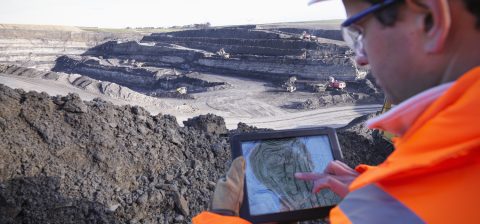Technology, Solutions and Innovations
5G Has Arrived
After struggling with government to get the spectrum required for 5G, Rain and Vodacom have finally flipped the switch on their 5G networks, and MTN will soon be launching its offering. 5G brings numerous benefits to South Africa, enabling a much smarter and more convenient way of living, working, and playing that cannot be supported by current 3G and 4G networks. Those in the know say it will solve problems we haven’t yet encountered.
“5G is exciting because it facilitates a broad range of consumer and business applications like smart homes and cities, cloud gaming and virtual reality, and the transformation of industries such as education, healthcare and manufacturing,” says Vodacom spokesperson Byron Kennedy. “The immediate benefits of 5G technology include the quicker deployment of broadband connectivity services with fibre-like speeds and the increased network capacity to handle the continued growth in data traffic.”
5G promises to deliver higher multi-Gbps peak data speeds, ultra-low latency, more reliability, massive network capacity, increased availability, and a more uniform user experience to more users. This means users should be able to download media content like 4K and even 8K movies in seconds.
Next-gen applications
“5G is expected to unlock the full capabilities of next- generation services such as virtual and augmented reality, ultra-high-definition video streaming, connected homes, artificial intelligence, robotics, automated cars, and the internet of things,” says Jacqui O’Sullivan, corporate affairs executive at MTN. “These scenarios are all still theoretical though, and it will take a lot of investment by governments and mobile-network operators to make them work.”
Augmented and virtual reality will be helpful to realise new applications such as e-learning and forms of entertainment like watching a sports game or music concert live in VR from home. Low latency, a key differentiator between 4G and 5G, enables files to download and upload quickly and easily. This makes applications such as remote robotic surgery a real possibility, giving surgeons the power to make decisions and send them to the surgery robot in near real time. 5G is also more efficient than 4G in terms of the energy required per bit of data transmitted or received.
Infrastructure upgrades
Vodacom’s 5G mobile network is currently available in Johannesburg, Pretoria, and Cape Town, with further roll-outs to other parts of the country planned in the coming months. The operator was assigned temporary spectrum by the Independent Communications Authority of South Africa for the duration of the COVID-19 national state of disaster, including 1 x 50MHz in the 3.5 GHz band, which was used to fast-track its 5G launch. “The deployment of 5G is helping Vodacom manage the significant increase in network traffic experienced during the lockdown,” says Kennedy.
Vodacom and Liquid Telecom have signed managed network services and national roaming agreements, and Vodacom will roam entirely on Liquid Telecom’s 5G network once access to the temporary spectrum comes to an end. Kennedy says the loss of this spectrum will not have an impact on customer experience or 5G roll-out.
MTN meanwhile has been modernising its radio network to be 5G ready, while also upgrading the transmission and core networks that are an integral part of any 5G network. “Our core network was upgraded in 2019 to be 3GPP Release 15 compliant as part of 5G trials we’ve been running,” says O’Sullivan. “Since then we’ve been looking at the opportunity to dynamically use spectrum for 4G and 5G in the same mobile band.”
So what is 5G?
5G is the latest wireless standard after 1G, 2G, 3G, and 4G networks. Designed to connect virtually everyone and everything together, including machines, objects, and devices, it will enable South Africa to participate in the much-vaunted Fourth Industrial Revolution. Massive amounts of data can be relayed between connected devices, systems and infrastructure, while supporting technologies like big data and artificial intelligence can also be applied with greater efficacy.






 Sign-up and receive the Business Media MAGS newsletter OR SA Mining newsletter straight to your inbox.
Sign-up and receive the Business Media MAGS newsletter OR SA Mining newsletter straight to your inbox.